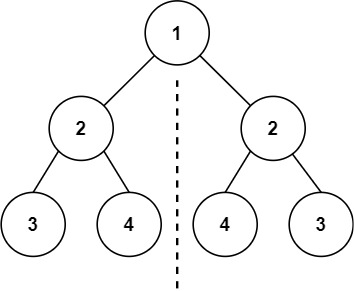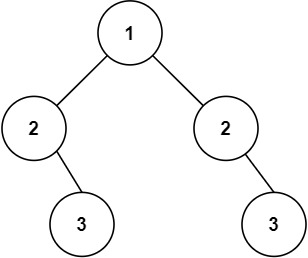Status
Development
Support
- 京ICP备2025123107号-1
- Worker 2, 1027ms
- Powered by Hydro v5.0.0-beta.13 Community
题目要求检查一棵二叉树是否是轴对称的,即判断这棵树是否为镜像二叉树。镜像二叉树的定义是:对于树中的每一个节点,其左子树与右子树互为镜像。
给你一个二叉树的根节点 root , 检查它是否轴对称。
一行包含二叉树的序列化数组,节点值之间用空格隔开,空节点用null表示。

输入
1 2 2 3 4 4 3
输出
true

输入
1 2 2 null 3 null 3
输出
false